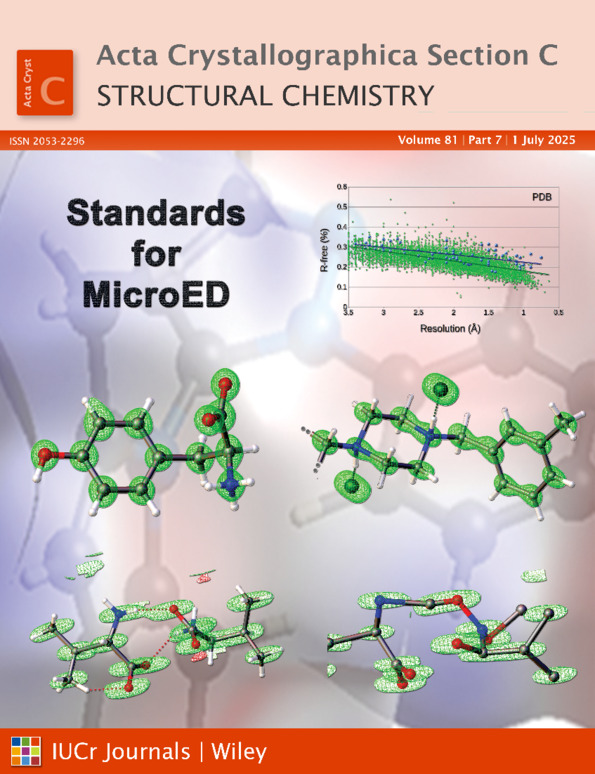Structural insights into 3-[5-(chlorobenzylidene)rhodanine]propionic acid isomers with antibacterial activity
Abstract
The rhodanine derivatives are a group of compounds known for their pharmacological action. Four new crystal structures of 3-[5-(chlorobenzylidene)rhodanine]propionic acid isomers, characterized by X-ray diffraction analysis and theoretical calculations, are reported. 3-[5-(2-Chlorobenzylidene)-4-oxo-2-sulfanylidene-1,3-thiazoliden-3-yl]propanoic acid, C13H10ClNO3S2, 1, crystallizes in the space group P21/c, with one molecule in the asymmetric unit. The other compounds, namely, 3-[5-(3-chlorobenzylidene)-4-oxo-2-sulfanylidene-1,3-thiazoliden-3-yl]propanoic acid, C13H10ClNO3S2, 2 and its polymorph 2p, and 3-[5-(4-chlorobenzylidene)-4-oxo-2-sulfanylidene-1,3-thiazoliden-3-yl]propanoic acid, C13H10ClNO3S2, 3, crystallize in the triclinic centrosymmetric space group, with one molecule in the asymmetric unit. The geometry of the created polymorphs indicates differences in the conformation of the carboxyethyl moiety and the position of the chlorine substituent on the aromatic ring. The crystal packing in all four presented crystal structures is dominated by intermolecular O—H…O hydrogen bonds. The calculated energies of the presented compounds show that the most biologically active, i.e.1, has the lowest stability, while the least active, i.e.3, is the most stable. Several theoretical descriptors were used to correlate the structural features of the studied compounds with their biological activity.




